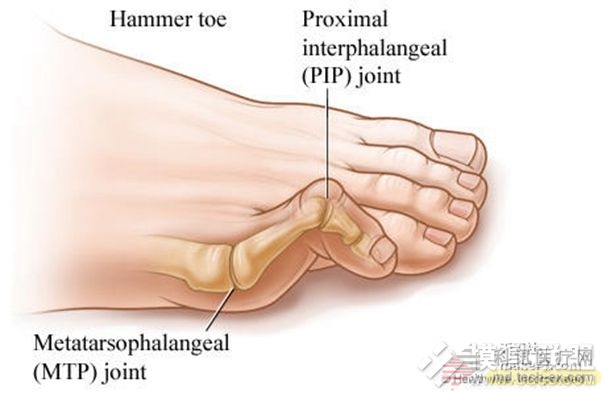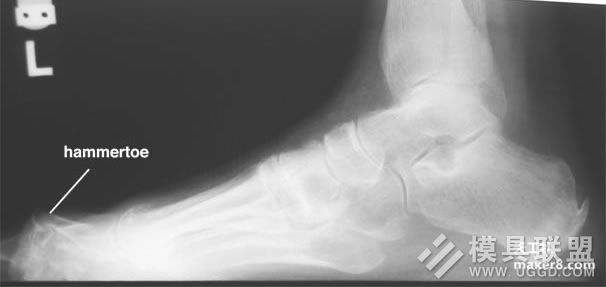Release date: 2016-07-18
The toe is a deformity of the foot, typically characterized by excessive bending of the second, third or fourth toe and looks shaped like a hammer. It is caused by deformation caused by long-term bending of the joint causing muscle contraction. This is usually caused by wearing shoes that are too small or too tight, or wearing very high heels, and the shape of the foot is unnatural. In addition, the clubar toe may also be caused by various conditions such as diabetes, osteoarthritis, rheumatoid arthritis and even stroke. It can cause severe pain, inhibit the patient's ability to walk, and cause other painful foot problems.

    In the case of a slight toe, the doctor usually performs physical therapy on the patient. It is recommended that the patient replace the loose new shoes with a soft insole to allow the toes to have sufficient space for full extension. Common physical therapy usually consists of a series of foot and joint exercises that help reshape the toes and prevent the condition from getting worse. Doctors and physiotherapists have also developed special stents that force the toes to return to the correct shape, but these can be very painful for the patient, depending on the severity of the disability and may not necessarily take effect.
    Many cases of a toe-like toe are corrected by foot surgery. In fact, more than one million people in the United States eventually have to undergo surgery to correct their clubats. As with any foot surgery, this often causes a lot of pain, takes weeks to recuperate, and does not guarantee a permanent solution. But Additive Orthopaedics, a New Jersey-based orthopaedic limb device manufacturer and developer, has announced that they have successfully treated a series of patients with a toe-like toe through a new type of toe implant.
    “Our implants have some properties and functions that can only be obtained through additive manufacturing processes. We believe that the market will respond well to this developing patient-specific product and other devices currently under review by the FDA, Greg Kowalczyk, president and founder of Additive Orthopaedics, said.

    The 3D printed correction implants developed by Additive Orthopaedics will be manufactured faster, tailoring the patient's foot and increasing the likelihood of successful correction. After the implant was successfully tested and the FDA approved the toe implant, the company would provide it to doctors across the country. The young startup has raised enough seed money to close their first round of financing and develop a toe implant. One of their investors is Asimov Ventures. After the trial was successful, Additive Orthopaedics is preparing to open a second round of financing to help them bring new products to market. They are also developing similar orthodontic implants and are seeking approval, such as claw toes.
Source: shawn
Preservation tubes are swabs with disposable virus sampling tubes to collect DNA tests for disposable nasal flocking sterile medical transport.
swabs with disposable virus sampling tubes , to collect DNA tests for disposable nasal flocking sterile medical transport.
Jiangsu iiLO Biotechnology Co., Ltd. , https://www.sjiilobiotech.com